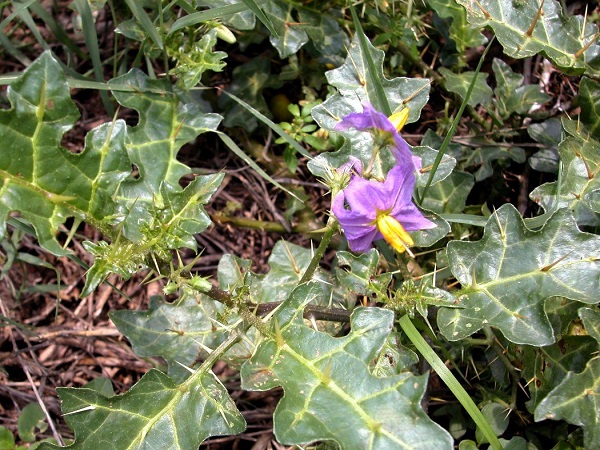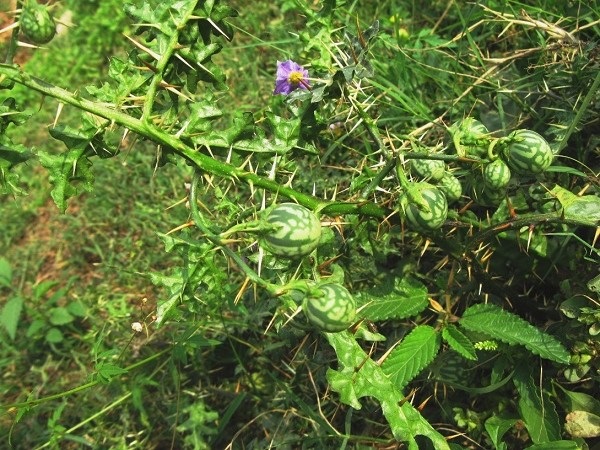
| Family | Solanaceae |
| English Name | Thorny Nightshade, Yellow Berried Nightshade, Dwarf Wild Brinjal, Prickly brinjal |
| Malayalam Name | Kandakari, Kandakarivazhuthina |
| Tamil Name | Kandankattari |
| Kannada Name | Nelagulla, Ramagulla |
| Telugu Name | Nelamulaka, Ramamulaka |
| Hindi Name | adkuntali, bhuringni, choto-baigan, gulari |
| Sanskrit Name | Kantakari |
| Trade Name | Yellow Berried Nightshade, Dwarf Wild Brinjal, Prickly brinjal |
| Part Used | Whole plant |
| In Wild | Yes |
| Under Cultivation | Yes |
| Temperature | 21-27 (Centigrades) |
| Rainfall | NA |
| Farmers | NA |
| Traders | NA |
| Institution | NA |
| Individually | NA |
| State/Region | NA |
| District | NA |
| Nursery Information | NA |
| Yield | An average crop yields about 16-20 tonnes/ha of dry biomass including 500 kg berries (dried) under good management practices. |
| Economic of cultivation | NA |
| Quantitative quality standards | • Foreign matter: Nil • Total ash: not more than 13.0 percent • Acid-insoluble ash: not more than 1.0 percent • Water-soluble extractive: not less than 15.0 percent • Alcohol soluble extractive: not less than 8.0 percent |
| Description | NA |
| Agro technology/Cultivation practices | 1. Planting-stock production: The crop is raised by seed. Before sowing, the seeds are soaked in water for 24 hours. This facilitates germination. Seeds take 10-15 days for germination. Raising seedlings in the nursery and later transplanting in the field produce good crop strand. Generally, nursery beds are prepared in the size of 7.5-10 meter long, one-meter wide and raised 10-15 cm above ground level. An area of about 500 m2 is required to raise seedlings for the one-hectare area. 2. Field planting: The seedlings are ready for transplanting in 6-7 weeks after sowing, it attains 10-12 cm in height and bear 4-6 leaves. Watering should be withheld 3-4 days in the nursery before transplanting so that seedlings get hardened. About 37,500 plants are recommended for planting in the one-hectare at 60 x 45 cm spacing. 3. Manuring/Fertilization: The crop responds well to the application of FYM. 4. Irrigation practices: Crop is rainfed where the amount of well-distributed annual rainfall of 400-600 mm and well distributed in the season. It requires protective irrigation in reproductive phase; moisture during both growth and fruiting should be adequate for proper plant development 5. Pests & diseases: No serious pest and diseases have been reported this crop. |
| Harversting | Matured berries are harvested before turning from green to yellow. Fruits are picked manually. Entire plant including roots is harvested at the end of the season. It should be done before abscission of leaves starts. |
| Processing | Fruits are kept in open for sun drying |
| References | NA |

